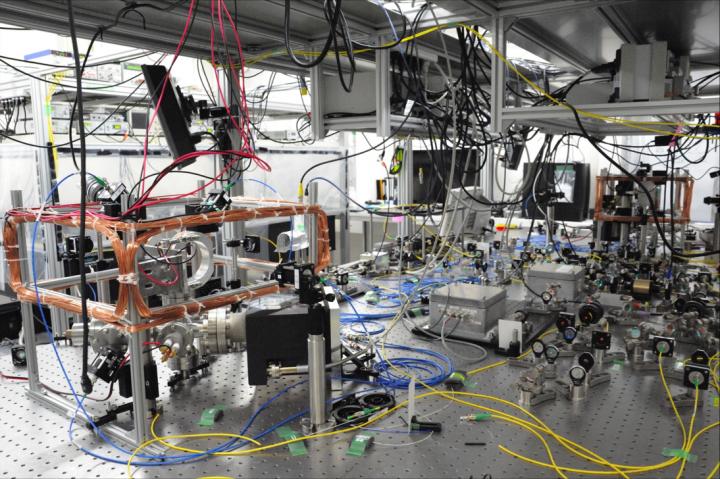A step closer to realizing distributed quantum computers

Credit: Aoki Laboratory, Waseda University
A team of scientists from Waseda University, the Japan Science and Technology Agency, and the University of Auckland developed an integrated, all-fiber coupled-cavities quantum electrodynamics (QED) system, in which a meter-long portion of conventional optical fiber seamlessly and coherently connects two nanofiber cavity-QED systems.
“This kind of system may enable quantum computation, free from the limited computational power that systems today experience, and quantum networks that transfer and process quantum information generated by quantum computers,” says Takao Aoki, professor of applied physics at Waseda University and leader of the research team. “In the future, such quantum information science technology may help provide breakthroughs that may change our society drastically, such as the discoveries of new materials and pharmaceutical drugs.”
The team’s study was published in Nature Communications on March 11, 2019.
A cavity-QED system is a system in which photons – elementary quanta of light – and atoms are confined within an optical resonator and interact with each other in a quantum-mechanical manner. This system has been a prototypical experimental platform for helping scientists to better understand and manipulate the quantum properties of photons and atoms, as highlighted by the award of the Nobel Prize in 2012 to physicist Serge Haroche for his ‘groundbreaking experimental methods that enable measuring and manipulation of individual quantum systems.’ Consequently, the expectation for cavity-QED systems to realize quantum information science technology has increased.
In order to realize such technology, integrating multiple cavity-QED systems with coherent, reversible coupling between each system was necessary, but obtaining such coupling with high enough efficiency has made this very challenging. Aoki and his team approached this problem by demonstrating a system consisting of two nanofiber cavity-QED systems connected to each other in an all-fiber fashion.
“In each cavity, an ensemble of several tens of atoms interacts with the cavity field through the evanescent field of a nanofiber, both ends of which are connected to standard optical fibers through tapered regions and sandwiched by a pair of fiber-Bragg-grating mirrors,” Aoki explains. “Multiple resonators can be connected with minimal losses using additional, standard optical fiber, making the coherent, coupled dynamics of the two nanofiber cavity QED systems possible.”
This enabled the team to observe a reversible interaction between atoms and delocalized photons separated by unprecedented distances of up to two meters, a first in any such quantum optical system.
Aoki says, “Our achievement is an important step towards the physical implementation of cavity QED-based distributed quantum computation and a quantum network, where a large number of cavity QED systems are coherently connected by low-loss fiber channels. In such systems, quantum entanglement over the whole network can be created deterministically, instead of probabilistically.”
Their system also paves the way for the study of many-body physics — the collective behavior of interacting particles in large numbers — with atoms and photons in a network of cavity QED systems, including phenomena such as quantum phase transitions of light.
The team is now making technical improvements to the setup to extend their work to the construction of a fiber network of coherently coupled, single-atom cavity QED systems. This includes reduction of uncontrolled losses in the cavities, active stabilization of the cavity resonance frequencies, and extension of the lifetimes of the atoms in the traps that hold them near the nanofibers.
###
About the published article
Published in Nature Communications on March 11, 2019
Title: Observation of dressed states of distant atoms with delocalized photons in coupled-cavities quantum electrodynamics
Authors: Shinya Kato, Nikolett Német, Kohei Senga, Shota Mizukami, Xinhe Huang, Scott Parkins & Takao Aoki
DOI: 10.1038/s41467-019-08975-8
University news on this study
About Waseda University
Located in the heart of Tokyo, Waseda University is a leading private research university which has long been dedicated to academic excellence, innovative research and civic engagement at both the local and global levels. Today, the student body at Waseda is approximately 50,000, over 7,000 of whom are from overseas, hailing from 120 countries. To learn more about Waseda University, visit https:/
Media Contact
Lisa Bobroskie
[email protected]
Original Source
https:/
Related Journal Article
http://dx.




